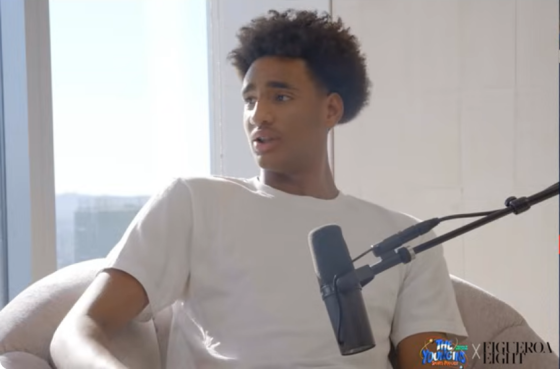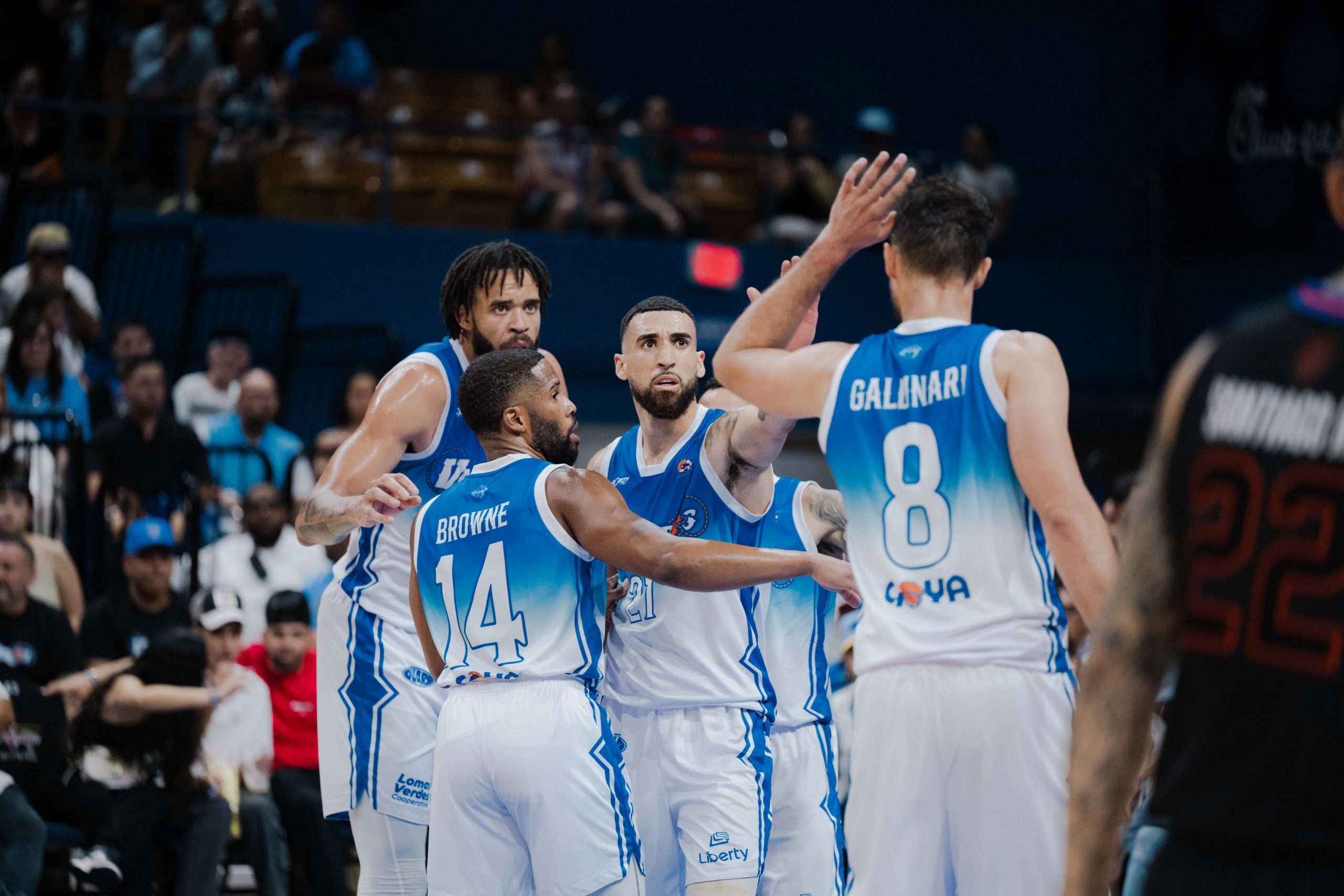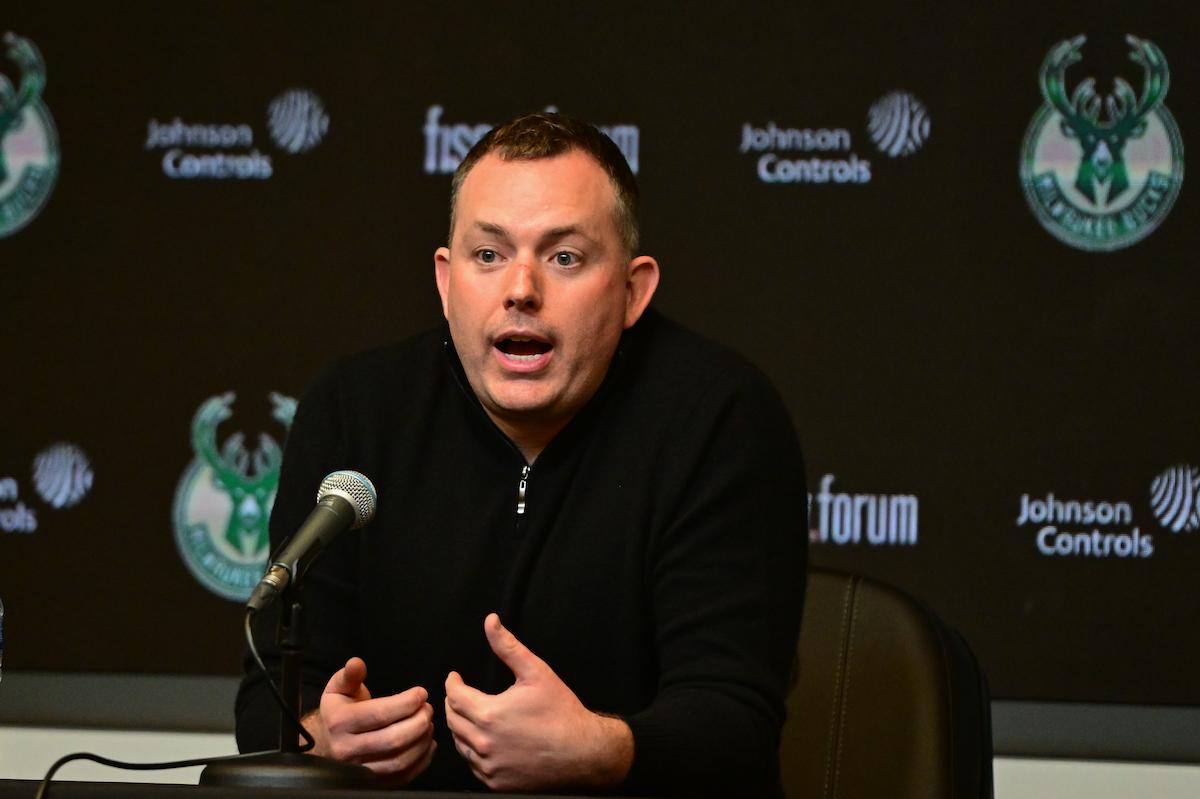The Boston Celtics summer league is over. Despite ending their participation with a 2-3 record, there were some fun games over the past week, with multiple members of D.J. MacLeay’s rotation impressing when given the opportunity. Even Jordan Walsh — who had struggled through four games, found a way to erase some of his tough nights from our memory courtesy of his performance on Sunday.
However, it was Boston’s two new rookies who stood out. We’ve already looked at Baylor Scheierman at what he could potentially bring to the Celtics rotation. If you missed that, you can find it here.
Today, we’re looking at the other new addition to Boston’s rotation: Anton Watson. The young “tweener” had a strong Summer League showing. He averaged 11.8 points, 5.2 rebounds and 1.6 assists while shooting 51.1% from the field and 35% from deep.
Rather than looking at every aspect of Watson’s skill set, we’re going to focus on the areas that could translate to a potential role in Boston or Maine. Those areas are: Off-ball cutting, perimeter playmaking, catch-and-shoot threes and defense. Watson does have more to his game than those four areas, but as we move toward training camp and, ultimately, the start of the season, any potential role he receives will likely comprise those skills.
Off-ball cutting
During his final season with Gonzaga, 17.1% of Watson’s overall offensive production came via off-ball cutting. He shot 66.2% in these scenarios, going 47-of-71.
In Summer League, Watson generally comprises four offensive play types: floor spacer, ball handler, screener, and DHO initiator. However, at the NBA level, where touches are much harder to come by, Watson would likely rely on his cutting ability to generate scoring opportunities for himself and others.
Those opportunities won’t always come by cutting toward the rim. He could also cut onto the perimeter courtesy of exit screens or pin-downs, where he could then flow into a shooting motion or provide some secondary creation.
Knowing that Watson can work without the ball and still be effective is encouraging.
Still, Watson’s lack of size does place a question mark over his interior scoring at the next level. At 6-foot-8, Watson is prone to getting stuffed at the rim or being forced to escape dribble and slow the offense down.
Defenders in the NBA are stronger, faster and more explosive. If Watson wants to be a multi-level scoring threat, he must add some tricks to his interior scoring game while also packing on strength to finish through contact.
His lack of size and strength is a primary reason why I don’t expect his post-up game to translate from the college to the pros, which is why we won’t be looking at that play type today. For reference, he took 65 shots out of post-ups, shooting 47.7%.
What we have seen, though, is that Watson is a capable post-passer. He has good vision, makes quick reads, and has the size to see over perimeter defenders if they try to pressure him with digs into the post.
Boston’s post offense is usually reserved for Jayson Tatum, Jaylen Brown, Jrue Holiday and Kristaps Porzingis. Al Horford may operate in there from time to time, too. However, unless Watson has cut off a screen and found himself in a post-up position, I don’t envision him needing to create from the block on a consistent basis — at least, not during the earlier years of his career.
Instead, the role we’ve seen from him in Summer League is likely what he would be tasked with in the NBA (and G-League).
A perimeter hub
When I think of how Watson could crack the main Celtics rotation, it’s this play that comes to mind. Joe Mazzulla’s offensive system is predicated on a five-out offense. As such, the big must be reliable on the perimeter, not only as a scorer but also as a creator and screener.
In the above clip, Watson initiates two separate dribble hand-offs. He also fakes a DHO with JD Davison. He sets multiple screens. And then, when the spacing is there, and the corner is empty, he rolls toward the rim, providing a passing outlet for Jordan Walsh, and gets an easy bucket as the reward for all of his hard work.
Watson’s fingerprints are all over that play. His willingness to move the rock, attack second-side actions, and make the most of the space his work has created are all encouraging signs of a potential fit within Boston’s system.
Here’s another example. Once again, Watson is tasked with operating on the perimeter in a delay action. And once again, Watson showcases his patience and willingness to let things unfold around him. The play ends in a flare screen for Baylor Scheierman. The shot doesn’t fall, but the half-court action involving Watson is our focus in this instance, and in that respect, he showcased his perimeter creation ability.
Watson’s perimeter-based game does have shades of Al Horford. He’s a mobile screener, plays at his own pace and tempo, can score off the catch on the perimeter and in the corner, has some post-creation skills. The rookie has previously spoken about learning from the recently crowned champion big man.
“Shooting is obviously a big piece. Kind of like that Al Horford role. He’s a great shooter. I think learning from him is going to be huge for me and actually all the veterans on this team,” Watson said. “Shooting is going to be huge and just my defense, using that to my strengths and coming out and guarding every single game. That’s going to be big for me. Yeah, shooting is going to open up my offensive ability, but defense is where I’m strong at.”
Catch-and-shoot 3s
Let’s start by looking at Watson’s year-by-year catch-and-shoot numbers since he entered his rookie season with Gonzaga.
- Year 1, 2019-20: Watson took shot 7 catch-and-shoot three-point shots, hitting 1, 14.3% conversion rate.
- Year 2, 2020-21: Watson took 16 shots, hitting 3, 18.8% conversion rate.
- Year 3, 2021-22: Watson took 13 shots, hitting 3, 23.1% conversion rate.
- Year 4, 2022-23: Watson took 32 shots, hitting 10, 31.3% conversion rate
- Year 5, 2023-24: Watson took 29 shots, hitting 12, 41.4% conversion rate.
In summer league, Watson took 12 shots, hitting 4 of them with a 33.3% conversion rate.
Shots like the one in the clip above are going to be there for Watson at the NBA and G-League level. If he can get comfortable re-locating into the corner and providing a catch-and-shoot release valve for the penetrating ball-handler, he will get plenty of reps to continue developing his shot, mechanics and range.
Horford took 257 corner threes last season, knocking them down at a 42% clip. The shot will be there for Watson when he’s on the court, as will the spacing and creation to give him high-quality attempts. The rest will be on him to keep working on his shot, building rhythm and making sure his motion is repeatable.
You can see a very similar play (and outcome) in the clip above, this time coming from the opposite corner. Once again, the ball-handler has engaged the defense, created space for Watson off the catch, and the Gonzaga product gets the shot to fall. We’ve seen the Celtics thrive off these spray actions since Mazzulla took over the head coaching gig, so it makes sense to believe Watson could spell minutes in a similar three-and-d role.
In this clip, you can see Watson run the floor to provide a “pitch-ahead” outlet in transition. When the ball doesn’t find Watson near the rim, he quickly relocates to fill the corner. JD Davison attacks off a stampede cut, draws multiple defenders and sprays the ball out to Watson for a wide-open three.
We’ve now seen three different clips of Watson hitting corner threes, all via dribble-drive penetration dishes. Those are the exact type of shots he will get with Boston and likely in Maine, too. The more of those he can take, the better he will get.
Of course, we’ve also seen that he’s capable of hitting a pull-up in space, too, which is vital for when he’s operating as a creation hub in the delay.
Defense
During his final year in Gonzaga, Watson spent a lot of time guarding on the perimeter, primarily getting switched onto guards or smaller wings. The result was he often got beat off the dribble. He also got caught when trying to rotate early, often finding himself having to close out hard on shooters.
When guarding spot-up shooting possessions like the one above, Watson held his opponents to a 50.9 effective field goal percentage, with them hitting 40% of their field goals and 38.2% of their threes.
Watson did have better success in summer league, primarily due to being matched up with forwards and rarely getting caught on tough switches. He also spent more time guarding corner shooters, which allowed him to use his size and ability to control angels to limit his opponents.
The above clip is the type of defensive possession and role we should expect to see from Watson. Tasked with guarding the corner, providing help defense around the rim, and switching on screens. He has the lateral quickness, low center of gravity and body control to cut off the court when guarding with the sideline and baseline as extra defenders.
His problem is when he’s tasked with guarding in space. Watson got dragged into 11 isolation defensive possessions in summer league, with his opponents shooting 72.7% against him. At this point in his development, he’s better suited as a supplementary defender who can guard fours and fives and protect the corner. If he’s switched onto quicker, shifter players, he struggled to keep pace with them.
Watson has some work to do on the defensive end. Don’t let his PnR defensive numbers fool you, either. Synergy has tracked him as holding opposing ball-handlers to 24.4% shooting when operating as the PnR ball-handler defender, indicating he can hold his own in a switch-based system.
However, when diving into the film, the majority of those possessions are show-and-recover, meaning Watson didn’t actually contest the shot but limited the ball-handler from penetrating before recovering to the rolling big.
Watson has the tools to become a reliable defender at the NBA level. However, it may be an area that limits his ability to crack the rotation over the next year or two while he continues to develop that side of his game. Still, if he can sustain solid defense across the low helpline and impact corner shooters while also rotating as a helper, he should have a defined role if he gets his number called.
After all, Watson was a late second-round draft pick; expecting him to be a finished product is unfair. While his offensive game has clear NBA translatability, his defense must catch up, especially after being drafted by a team that prides itself on being a lockdown unit.
Final thoughts
Watson emerged as my favorite Celtic at summer league. His NBA-ready approach on offense, coupled with his personal pace made him a fun prospect to track. His defense didn’t look to out of place due to his defined role, and for the most part, he projected as someone who could potentially spell minutes in a pinch.
However, with summer league now in the history books and some additional film work under my belt, I wouldn’t expect to see too much of the Gonzaga alumn in the coming season. He needs to considerably improve his defense if he’s going to hold his own at the NBA level — with guarding in space being a main focus point, in my opinion.
Fortunately for Watson, he’s landed on a Celtics team that has proven to be gifted at developing talent in recent years. If he can make some strides on the defensive side of the ball, he could be knocking on the door for a rotation spot next season when both Horford and Luke Kornet will be reaching the end of their current contracts. That timeline seems reasonable and potentially achievable for Watson.
For now, it will be fun tracking his progress in Maine.
CelticsBlog graciously allowed this article to be cross-posted from my “Celtics Chronicle” newsletter.






